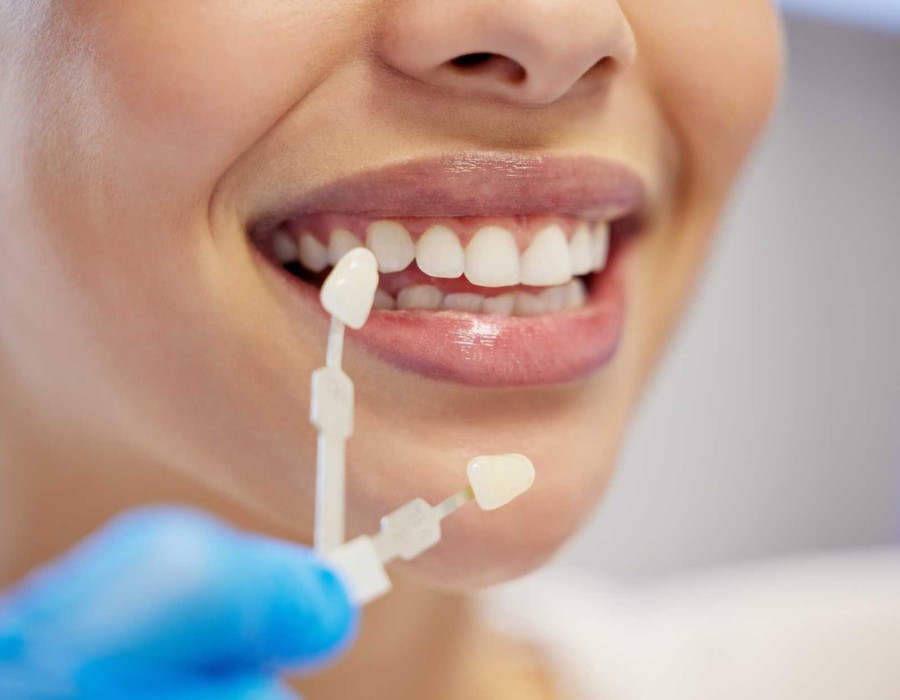The Evolution of Dental Veneers
In the realm of cosmetic dentistry, dental veneers have long been a trusted solution for patients seeking to enhance their smiles. Traditionally crafted from porcelain or composite resin, veneers have helped correct issues such as discolouration, chips, gaps, and uneven teeth. However, recent technological advancements have taken these treatments to a new level, significantly improving both the experience and the outcome for patients. At clinics like ortho dental clinic, the integration of new materials, techniques, and digital tools is transforming how veneers are designed, produced, and applied.
The Rise of Digital Smile Design (DSD)
Personalised and Predictable Outcomes
One of the most significant innovations in dental veneer technology is Digital Smile Design (DSD). This technology uses 3D imaging, facial mapping, and digital simulations to create a highly accurate representation of a patient’s future smile. Patients can now preview the outcome before any actual procedure begins. This process not only increases patient satisfaction but also allows the dentist to customize the veneers to better match the patient's facial structure, personality, and preferences.
Minimally Invasive Planning
Digital Smile Design also supports a more conservative approach to tooth preparation. With the help of 3D imaging, dentists can ensure that the removal of the natural tooth structure is minimal. This aligns with the growing demand for minimally invasive procedures, which help maintain the integrity of natural teeth while still delivering outstanding aesthetic results.
Advanced Materials: Stronger and More Natural
Next-Gen Porcelain and Composite Resins
Material science has evolved considerably in recent years, and dental veneer fabrication has benefited immensely. The latest porcelain materials are not only more durable but also mimic the natural translucency and color variation of real teeth better than ever before. Lithium disilicate and zirconia are two materials gaining popularity due to their strength and life-like appearance.
Similarly, composite resin materials have improved in quality, offering a less costly but aesthetically pleasing alternative to porcelain. They are easier to repair and adjust, making them ideal for patients who prefer quicker, more affordable procedures without sacrificing appearance.
Biocompatibility and Longevity
Another major innovation is the use of biocompatible materials. These new veneers integrate more naturally with the patient’s oral environment, reducing the risk of inflammation or allergic reactions. They are also more resistant to staining and wear, extending the life of the veneers and ensuring long-term satisfaction.
CAD/CAM Technology: Precision and Speed
Chairside Efficiency
CAD/CAM (Computer-Aided Design and Computer-Aided Manufacturing) technology has revolutionized how veneers are produced. Dentists can now scan a patient’s teeth digitally, design the veneer on-screen, and fabricate it on-site—sometimes in a single visit. This chairside efficiency saves time for both the patient and the dentist while enhancing the precision of the veneer’s fit.
Improved Fit and Comfort
Because the design process is digital, the resulting veneers fit more accurately than those made from traditional molds. This not only improves patient comfort but also minimizes the need for multiple adjustments. Clinics such as ortho dental clinic are leveraging this technology to deliver customized, same-day veneers with exceptional results.
Laser Technology in Veneer Preparation
Less Discomfort, Better Outcomes
Laser-assisted dentistry has become increasingly common in veneer applications. Dentists can now use lasers to prepare the enamel with greater precision and less discomfort. This technique is less invasive than traditional drilling, leading to reduced sensitivity and faster healing times.
Cleaner Surface for Bonding
Laser preparation also ensures a cleaner surface for the veneer to bond with, which enhances adhesion and longevity. This contributes to fewer complications and better long-term results for the patient.
AI and Predictive Modeling
Artificial intelligence is starting to play a role in aesthetic dentistry. AI-powered software can analyze thousands of facial and dental metrics to help dentists determine the most flattering tooth shape, size, and color for each individual. When combined with other technologies, AI enhances the accuracy and personalization of dental veneers.
Patient-Centered Experience
Improved Communication
Innovations in veneer technology have led to better communication between dentists and patients. Digital mockups, real-time simulations, and high-resolution imaging help patients visualize their new smiles and feel more involved in the treatment planning. This collaborative approach builds trust and increases satisfaction.
Reduced Anxiety and Recovery Time
Technological improvements have made the veneer process more comfortable and less intimidating. From digital scans that replace traditional molds to laser-guided tooth preparation, each step is designed to reduce anxiety and make the experience smoother for the patient.
Sustainability and Eco-Friendly Approaches
Modern veneer labs and clinics are also beginning to consider the environmental impact of dental treatments. Many are switching to sustainable materials and processes, such as recyclable packaging, eco-friendly production techniques, and reduced waste methods. While still in the early stages, these green initiatives signal a promising direction for the future of cosmetic dentistry.
Final Thought
The landscape of dental veneers is undergoing rapid transformation thanks to a convergence of advanced technologies, materials, and patient-centered practices. Clinics like ortho dental clinic are adopting these innovations to deliver better, faster, and more personalized outcomes. From Digital Smile Design and AI-assisted modeling to laser preparation and biocompatible materials, every step of the veneer journey is becoming more efficient and effective. As technology continues to evolve, patients can expect even greater improvements in aesthetics, comfort, and durability, making the decision to enhance their smile with veneers more appealing than ever before.





Comments